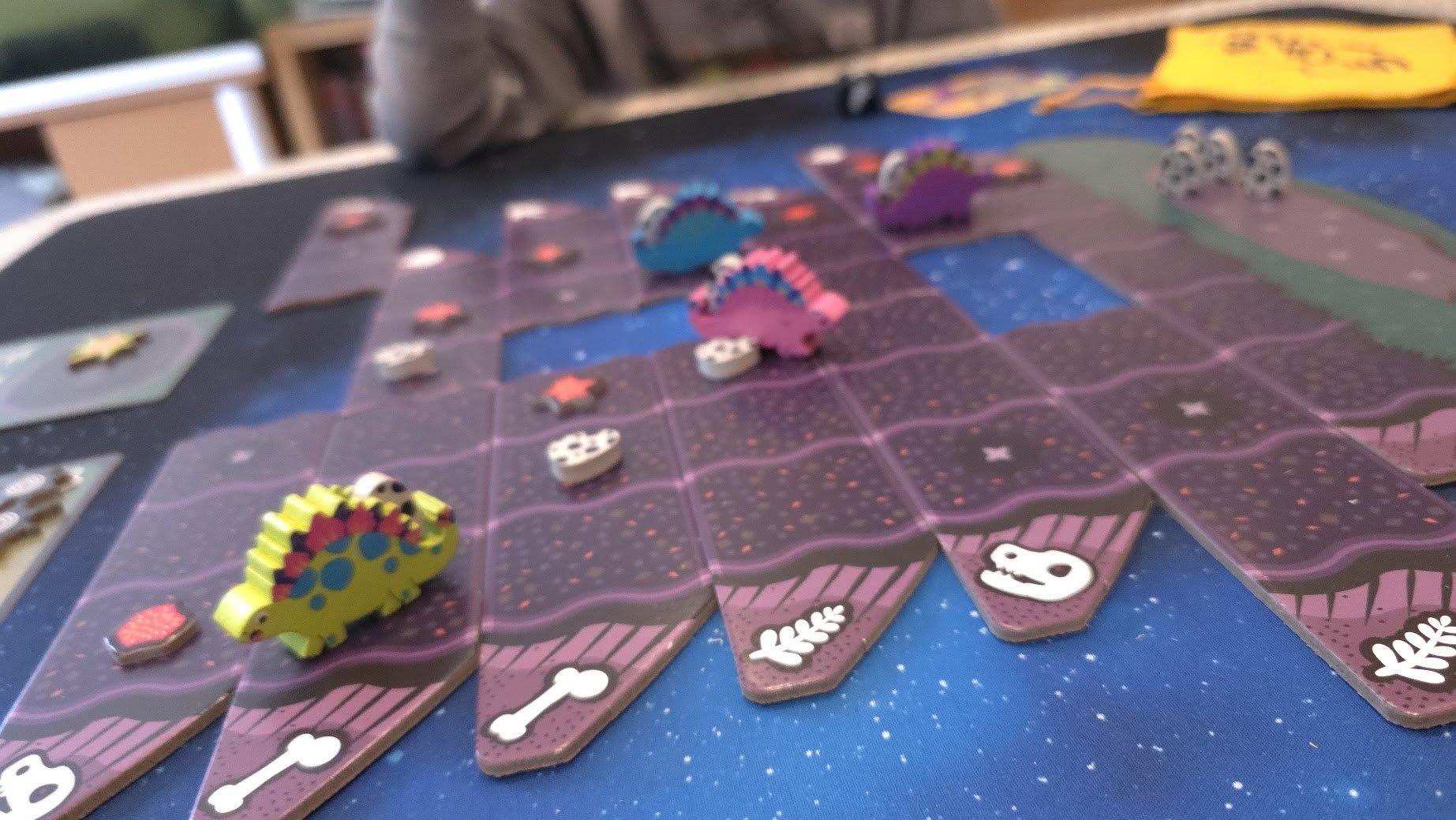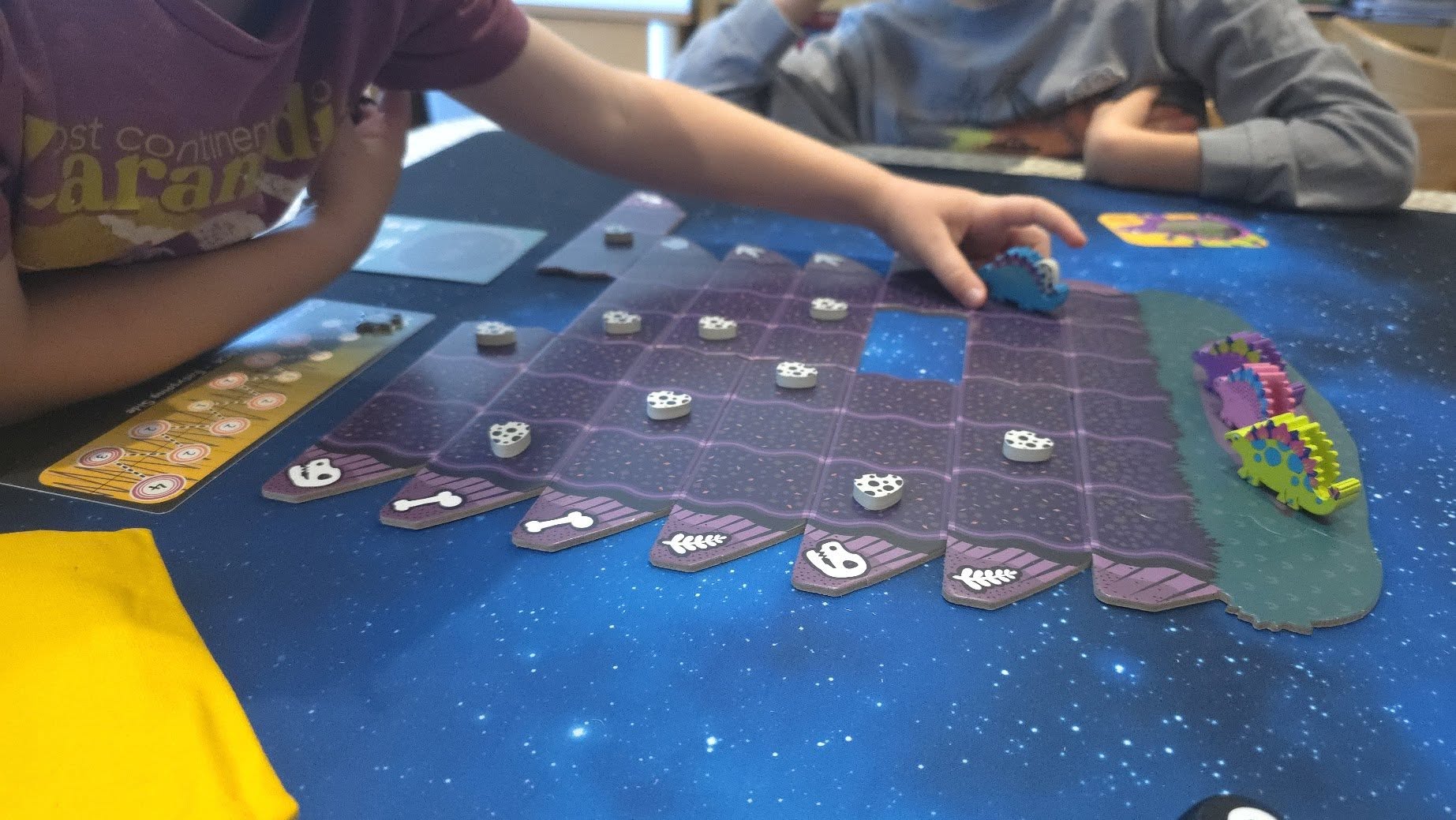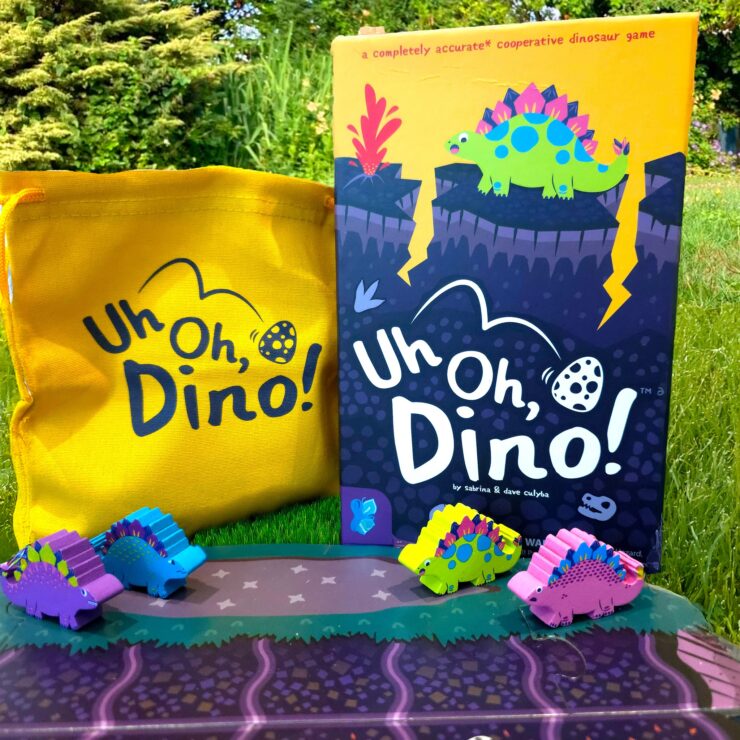A few days ago a very unassuming box called Uh Oh, Dino! landed on my doorstep, which promised a fun and approachable
cooperative game based around dinosaurs.
Needless to say, having played it, this might be one of my favourite co-op strategy games to play with younger kids, and I’d even go as far as to say this is a better dinosaur-related game than SOS Dino.
Set up is simple. You place your nest at one end and lay all of your valley tiles randomly in the middle so that the edges have different markings. You then place all of the eggs out in the valley, and the general concept of the game is that you are trying to return all of your eggs from the valley back into the nest. The issue, however, is that the valley is plagued by volcanoes and earthquakes. As you go through the game, parts of the valley are going to be cut off by lava, and as earthquakes happen the tiles are going to move and split apart, potentially even cutting off parts of the map entirely.

You start the game by rolling a dice. This tells you which tiles you’re going to move, and then you move those tiles a certain number of spaces away from the centre, thus creating gaps in the map and moving everything outwards. Should a tile ever get pushed so far outwards that it’s no longer attached to the main body, that tile is lost along with any eggs or (god forbid) players that are on it.
On your turn you draw a token from the bag. This gives you the number of actions you can do, along with either an earthquake, lava pit, or a fruit, which is a good bonus as this can be used to do special actions later.
It’s worth mentioning here one of the coolest mechanics I’ve ever come across in any kind of blind bag draw. When I first popped out the tokens I was really surprised that they weren’t smooth — they’re actually quite jagged in places. And this is where an amazing mechanic comes in: essentially, the more jagged the tokens are, the higher the general amount of actions is going to be on them, but equally the higher chance that a negative action such as an earthquake or lava pit will be attached. This is a really cool mechanic I’ve never seen before, and it’s awesome.

On your turn you can take the number of actions that you drew. These actions can be to move (including diagonally, which can be really strong), to stomp and shift the valley tile you’re on further into the middle (which is important to keep the island together), or to alley-oop and leap over another dinosaur to gain further ground. This last one is especially useful if you’re trying to quickly get around the map, particularly with some of those bottom eggs which otherwise would take quite a few turns to reach.
Getting those lava tiles means a lot of tiles end up on your board, which blocks spaces as you can’t go there. An earthquake tile makes you roll the dice and move certain tiles outwards.
The game then becomes this strategic mix of trying to get the eggs as quickly and efficiently as possible, while also avoiding too many lava tiles and keeping the whole island together by stomping as you go around.
As you collect special fruit, you can then turn these into extra powers, such as the ability to move along a tile, stomp a tile all the way back to the middle, or change the power on a quake action you rolled.

The game ends if all of the eggs have been saved, if all of the earthquakes that can possibly occur have happened, or if a dinosaur is lost. At this point you look to see how many eggs you got — obviously trying to get the full 12. What’s interesting is that if you don’t get the full 12, there isn’t a guide that tells you outright whether you win. Instead, you roll the dice to see what fossil face lands up. Depending on how many eggs you saved, you either have more icons that count as a win, as well as more free re-rolls to get that icon. This basically determines whether your herd has survived this cataclysmic event.
The components are really nice. The dinosaur meeples are awesome, and they have this neat little space in the back where the egg goes, which makes carrying the eggs an absolute joy. The jigsaw tiles work really well, and what’s really surprising is that for a game that feels quite big and takes up a decent chunk of space on the table, it actually comes in a compact box that’s easy to store on the shelf — always a positive in this household.
I’ll be honest, I didn’t have any real expectations for Uh Oh, Dino! but having played it a couple of times now I must say this is potentially one of my favourite children’s co-op strategy games. My only slight concern is that we didn’t actually find it that difficult, and even when playing on the difficult setting we still managed to get 10 eggs quite comfortably on our first try. I’d love to see an expansion with extra bits and a bit more complexity, but to be honest that might work even better as a sequel.
Uh Oh, Dino! is a wonderful little game that I 100% recommend, especially if you are looking for your next co-op adventure to go on with your child.














